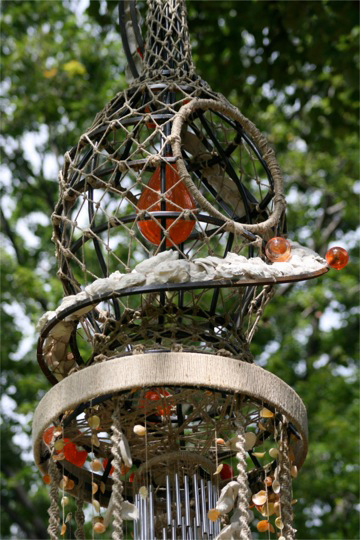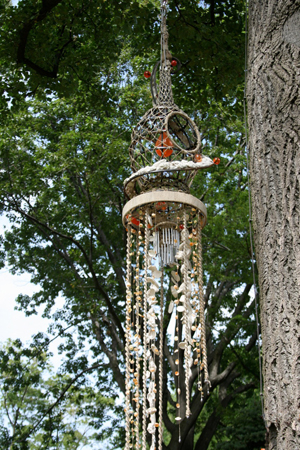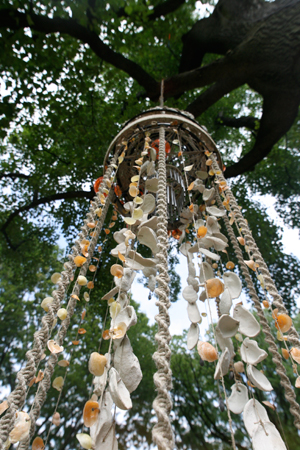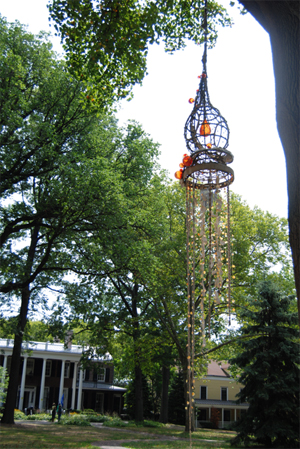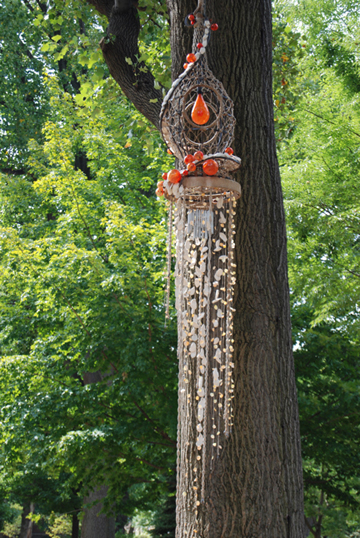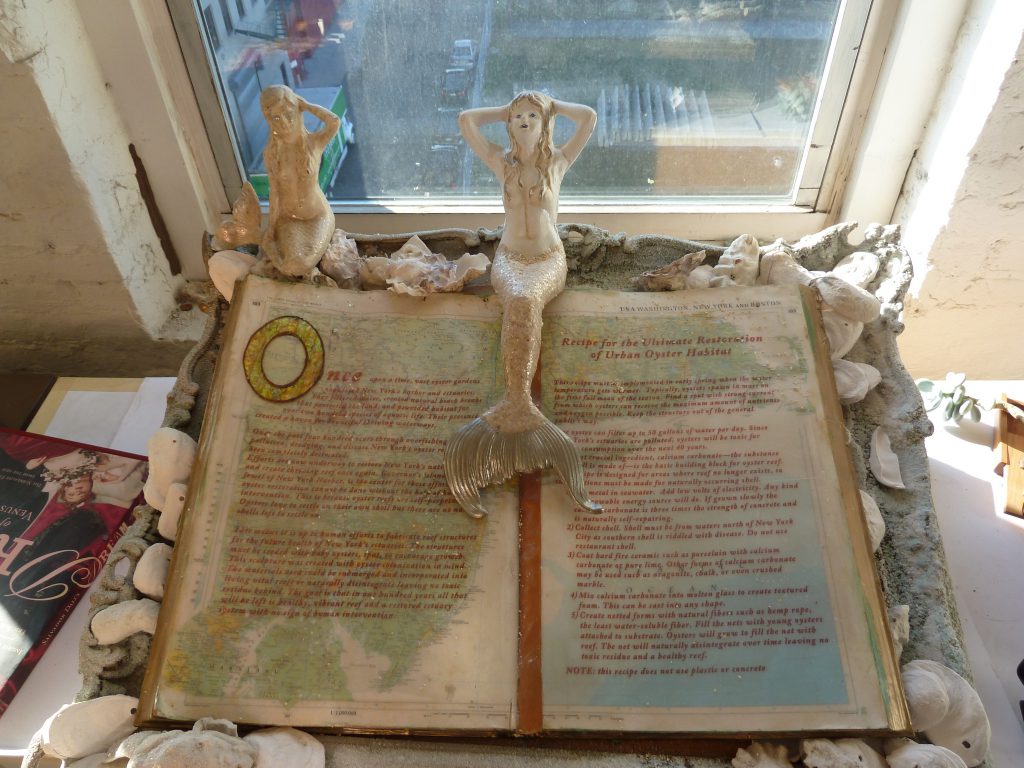“There is no better place to have this work at this time than on Governor’s Island. The work is located in the heart of New York City’s Oyster Restoration efforts. The Harbor School, in conjunction with the NY/NJ Baykeepers, is doing unprecedented work in urban oyster restoration. New York was once dubbed the ‘Oyster Capitol of the World’. We must look to our past to see our way to a healthy future.”–Mara G. Haseltine
Enchanted Oyster Sweet Spot: A Future Substrate for Aquatic Life (2010) is a site-specific sculpture in Nolan Park on Governor’s Island in New York Harbor. The sculpture hangs thirty feet above the ground suspended from the limbs of a tulip tree. Haseltine’s work attracts passersby in sound and sight a wind chime made of mollusk shells, Anomie simplex, collected from the North fork of Long Island.
The oyster is a keystone species, filtering and cleaning the water to provide a rich habitat for other species both large and small. The sculpture is made of natural materials, oyster shells, hemp, marble powder, and glass, all compatible with oyster life and the health of the water. In principle, it could be fully submerged to serve as a nucleus for the formation of a new urban oyster reef.
The educational mission is achieved in part by an accompanying atlas turned to the page of New York Estuaries. Upon this page a visitor will find instructions for creating a healthy oyster reef. The recipe is based on five years of intensive research regarding how best to create a sustainable oyster reef. The atlas brings together knowledge of the best practices into a single source. One example, porcelain, is an ideal non-degradable but bio-compatible material for reef restoration. Archeologists have found examples of porcelain intact after being immersed in the sea for many thousands of years. Marble and marble powder are also bio-compatible. Marble is comprised of the same material, calcium carbonate, as are oyster shells.
The form of the reef as well as its materials are important for oyster health. The long tentacle-like strands suspended from the structure move and sway above the earth and would do so suspended in the sea as well allowing for maximum water flow around the attached oysters.
The educational component was created in collaboration with marine biologists and experts of the New York Department of Environmental Conservation and is accord with the Department’s mandate that reef materials last for at least 100 years with zero negative environmental impact.
Materials: metal, porcelain, crushed marble, glass, hemp, anomie simplex.
